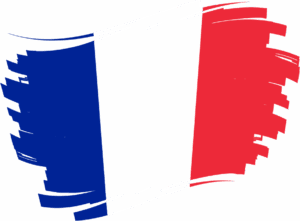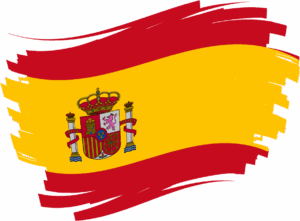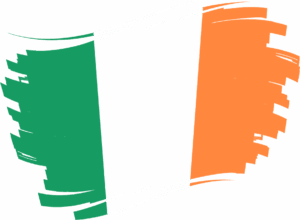
Fishing port of Granville
Fishing port, commercial port and marina. Presence of a fish market Flotilla of 55 fishing vessels :
mainly dredgers & caseyeur (pot vessels)

This is a multi-purpose port which accommodates approx.
20 trawlers, 5 scallop boats and 25 inshore vessels for crab, lobster & whelk. In addition, charter deep-sea angling vessels, tourboats to the Saltee Islands, and leisure crafts use the port.
There are also seafood processing plants next to the port.
![]()
The port management have a skid steer for use on the port to assist where necessary. The larger fishing companies use a teleporter, pick-up truck etc. to deliver to the PRF.
Delivery : The harbour master (HM) is contacted by the boat owner about the type of waste being dropped on site. A ‘Standard format for the waste delivery receipt’ is filled out.
Waste Reception: There is a contained area with segregated waste bins/ skips.
Transfer to storage area: Fishermen are responsible for the separation and delivery of waste.
Pre-treatment: There is no pre-treatment.
Waste Streams: separated into different streams.
EOL: A lay-down area is available for storage and separation in metal, nets, rope etc. The HM records amounts and
arranges for collections twice a year by Wexford County Council to its municipal landfill and civic amenity site where all recyclable material is sent for recycling and the remainder is sent to landfill.
Metal from gear is taken away by a local provider for recycling.
The rubber components from gear are often reused also. Management costs: Wexford County Council Harbour and Port Fee’s’ system has waste management costs included I it charges. Fees are based on Gross Registered Tons, Length of vessel, the period and frequency of facility use.
![]()
Fishing for Litter’ is run under BIM’s Clean Oceans Initiative. Participating boats bring back passively fished waste, collected in half tonne bags that are provided by BIM to store on board. All PFW is then recorded by the Harbour Master and disposed of in general waste. 9 skips of 2.3 tonne PFW were collected in 2023. Following research carried out on behalf of BIM it was discovered that is it not currently feasible to enter FfL into the recovery system, the degradation, mixed and soiled condition of items collected, the low quantity of material available and the lack of value chain available.
![]()
• The PRF area is a confined space, and the addition of any further segregated waste bins will be difficult accommodate.(fig.2)
• Lack of space to segregate and store EOL
• Lack of resources to carry our segregation, categorisations, reporting etc.
• No 24-hour PRF monitoring, i.e., if a boat docks late at night FfL may end up in general waste or vice-versa.
• There is signage on the piers to direct fishermen to the waste facilities available.
• There is clear and modern signage used in each section of the facility. (fig.1).
• There is designated area for EOL storage ad segregation.
• A waste survey was carried out on behalf of BIM, in 2024 to establish the extent of fishing gear waste present in municipal waste skips on ports.
• This information was also used to characterise waste and as part of the reporting requirements that Ireland need to fulfil.
Objectives:
• The port management are actively seeking a recovery system provider for nets/ rope.
• Meet recycling targets, specifically for nets.

Fishing port, commercial port and marina. Presence of a fish market Flotilla of 55 fishing vessels :
mainly dredgers & caseyeur (pot vessels)

Fishing port
A fish market (1st auction in Normandy and 6th in France) Fleet of 61 vessels (mainly trawlers)

Fishing port, marina & ship repair area Presence of a fish market
Flotilla of 98 vessels (mostly deep-sea)

Fishing port and marina
No fish market but fish preparation area 7 fixed vessels (small-scale coastal fishing)

General cargo (paper, wood, fruit, steel), bulk solids (grains, flours, and fertilizers), ship services (construction, repair, fuel, oils…), fishing activity (fresh and frozen), fish auction.
Fishing practice: 77 vessels and ships (mainly inshore, 12 trawlers operating in the Grand Sole fishing grounds, 4 coastal trawlers, and 8 operating in Portuguese waters)
Landings: Sardine, horse mackerel, Atlantic mackerel, Atlantic bonito, spider crab, velvet crab, shrimp, Norway lobster, hake, European hake (whiting), blue whiting, squid, monkfish, scorpionfish, red gurnard, sole, cuttlefish, octopus, conger eel, ray, others

General cargo, bulk solids, ship service, fishing activity (fresh and frozen), fish market.
Fishing practice: fleet of 359 vessels and ships (mostly artisanal vessels)
Landings: Black monkfish, White monkfish, Blue shark, Swordfish, Northern megrim, Atlantic pomfret, European hake, Korean flounder, Common squid, Horse mackerel…

Fishing port and marina
Presence of a fish market, online sales only Flotilla of 30 vessels (gillnetter and trollers)

This is small fishing pier with 19 regular boats from 6m to 28m, including 1 x Demersal trawler (Prawns), 2 x Pelagic vessels and Inshore fishing boats.
There is also a RNLI station and a Rowing Club attached to the pier.

Multiple port activities, highlighting liquid and solid bulk traffic, as well as general cargo. Fishing is the main pillar of the port and has a fish market.
Fishing practice: 94 vessels (mostly small-scale), but the number rises to 190 when including boats that unload at the fish market but are not based at the port.
Landings: Poor cod, horse mackerel, mackerel, sardine, common bream, European anchovy, starling, hake, whiting, sole, megrim, skate, dogfish, black scorpionfish, monkfish, John Dory, red mullet, rockling, pollock, pipefish…